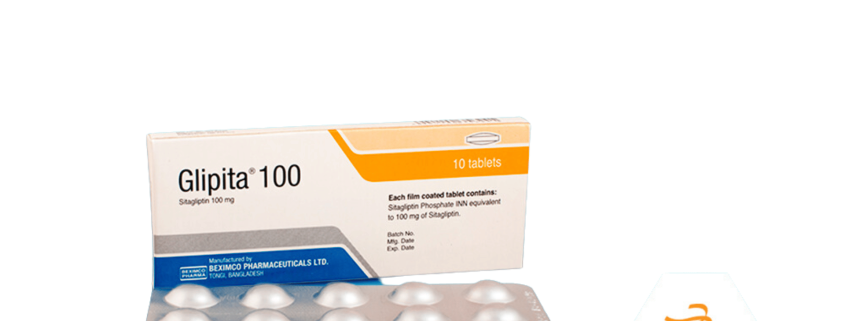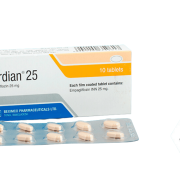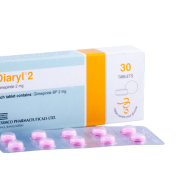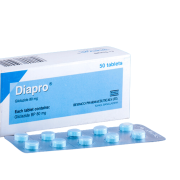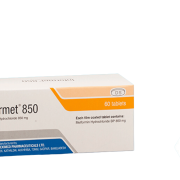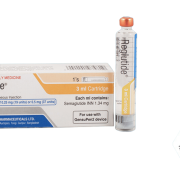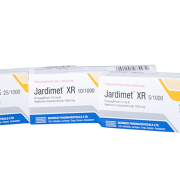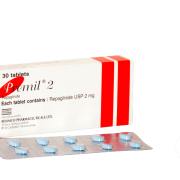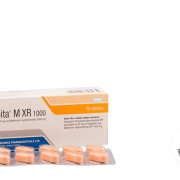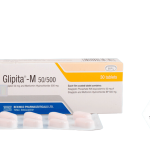Glipita

Generic Name: Sitagliptin
Dosage Form: Tablets
TG Name: Endocrine & Diabetes
What is Glipita?
Glipita is the preparation of Sitagliptin. Sitagliptin is a new oral agent approved by the USFDA to treat type 2 diabetes with diet & exercise. It belongs to a new class of antihyperglycemic, Dipeptidyl Dipeptidase-4 (DPP-4) inhibitors. This unique class of orally active agent targets the underlying pathophysiologic processes of type 2 diabetic patients and provides an excellent alternative to the traditional agents.
How Glipita works in our body?
Normally, when glucose appears in blood after meal, Incretin hormones (GLP-1 & GIP) are secreted from gut to stimulate pancreatic β cell for insulin secretion and to act on α cell for glucagon inhibition. Dipeptidyl Peptidase 4 (DPP-4), an enzyme present in plasma, inactivates GLP-1 & GIP to stop insulin secretion from pancreatic β cell and to increase uninterrupted glucagon secretion from pancreatic α cell. Sitagliptin inhibits plasma DPP-4 activity (i.e. inactivation of GLP & GIP) and thus, increases circulating levels of active GLP-1 and GIP by two-to-threefold. This in turn, increases insulin release from pancreatic β cell and decreases glucagon levels from pancreatic α cell in the circulation in a glucose-dependent manner. Therefore, Sitagliptin is the only oral drug that involves both pancreatic α & β cell in a complimentary mode of action and thus ensures effective glycemic control in type 2 diabetes.
What is the indications of Glipita?
Monotherapy- GLIPITA is indicated as an adjunct to diet and exercise to improve glycemic control in patients with type 2 diabetes mellitus. Combination with Metformin- GLIPITA is indicated in patients with type 2 diabetes mellitus to improve glycemic control in combination with Metformin as initial therapy or when the single agent alone, with diet and exercise, does not provide adequate glycemic control. Combination with a Sulfonylurea- GLIPITA is indicated in patients with type 2 diabetes mellitus to improve glycemic control in combination with a sulfonylurea when treatment with the single agent alone, with diet and exercise, does not provide adequate glycemic control. Combination with a Thiazolidinediones- GLIPITA is indicated in patients with type 2 diabetes mellitus to improve glycemic control in combination with a thiazolidinedione when treatment with the single agent alone, with diet and exercise, does not provide adequate glycemic control. Combination with Metformin and a Sulfonylurea- GLIPITA is indicated in patients with type 2 diabetes mellitus to improve glycemic control in combination with Metformin and a sulfonylurea when dual therapy with these agents, with diet and exercise, does not provide adequate glycemic control.
What is the dosage guideline for Glipita?
The recommended dose of SITAGLIPTIN is 100 mg once daily as monotherapy or as combination therapy with Metformin, a sulfonylurea, a thiazolidinedione, or Metformin plus a sulfonylurea. SITAGLIPTIN can be taken with or without food. Patients with Renal Insufficiency- For patients with mild renal insufficiency (creatinine clearance [CrCl] ≥50 mL/min, approximately corresponding to serum creatinine levels of ≤1.7 mg/dL in men and ≤1.5 mg/dL in women), no dosage adjustment for SITAGLIPTIN is required. For patients with moderate renal insufficiency (CrCl ≥30 to 1.7 to ≤3.0 mg/dL in men and >1.5 to ≤2.5 mg/dL in women), the dose of SITAGLIPTIN is 50 mg once daily. For patients with severe renal insufficiency (CrCl 3.0 mg/dL in men and >2.5 mg/dL in women) or with end -stage renal disease (ESRD) requiring hemodialysis or peritoneal dialysis, the dose of SITAGLIPTIN is 25 mg once daily. SITAGLIPTIN may be administered without regard to the timing of hemodialysis. Concomitant Use with a Sulfonylurea- When SITAGLIPTIN is used in combination with a sulfonylurea, a lower dose of sulfonylurea may be required to reduce the risk of hypoglycemia. Patients with Hepatic Insufficiency- No dosage adjustment is necessary for patients with mild to moderate hepatic insufficiency. SITAGLIPTIN has not been studied in patients with severe hepatic insufficiency. Elderly- No dosage adjustment is necessary for elderly patients. Pediatric population- There is no data on the use of SITAGLIPTIN in patients younger than 18 years of age and therefore not recommended.
Is there any dosage guideline for special population like renal insufficient patient with type 2 diabetes?
| Dosage adjustments in patients with moderate, severe, or end-stage renal disease (ESRD) | |
| 50 mg once daily Moderate | 25 mg once daily Severe and ESRD |
| CrCl ≥30 to | CrCl |
| Men: >1.7 – ≤3.0 Women: >1.5 – ≤2.5 | Men: >3.0 Women: >2.5 or on dialysis |
What are the precautions should I follow?
SITAGLIPTIN should not be used in patients with type 1 diabetes or for the treatment of diabetic ketoacidosis. Dosage adjustment is recommended in patients with moderate or severe renal insufficiency and in patients with ESRD. Assessment of renal function is recommended prior to initiating Sitagliptin and periodically thereafter. When used with a sulfonylurea, a lower dose of sulfonylurea may be required to reduce the risk of hypoglycemia. There have been post marketing reports of serious allergic and hypersensitivity reactions in patients treated with Sitagliptin such as anaphylaxis, angioedema, and exfoliative skin conditions including Stevens-Johnson syndrome. In such cases, promptly stop Sitagliptin, assess for other potential causes, and institute appropriate monitoring and treatment, and initiate alternative treatment for diabetes. There have been no clinical studies establishing conclusive evidence of macrovascular risk.
What are the possible adverse reactions of Sitagliptin?
Adverse reactions reported in ≥5% of patients treated with SITAGLIPTIN and more commonly than in patients treated with placebo are: upper respiratory tract infection, nasopharyngitis and headache. Hypoglycemia was also reported more commonly in patients treated with the combination of SITAGLIPTIN and sulfonylurea, with or without Metformin, than in patients given the combination of placebo and sulfonylurea, with or without Metformin.

